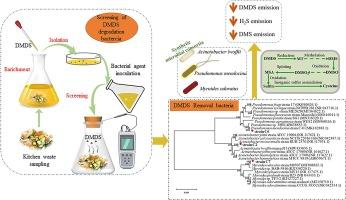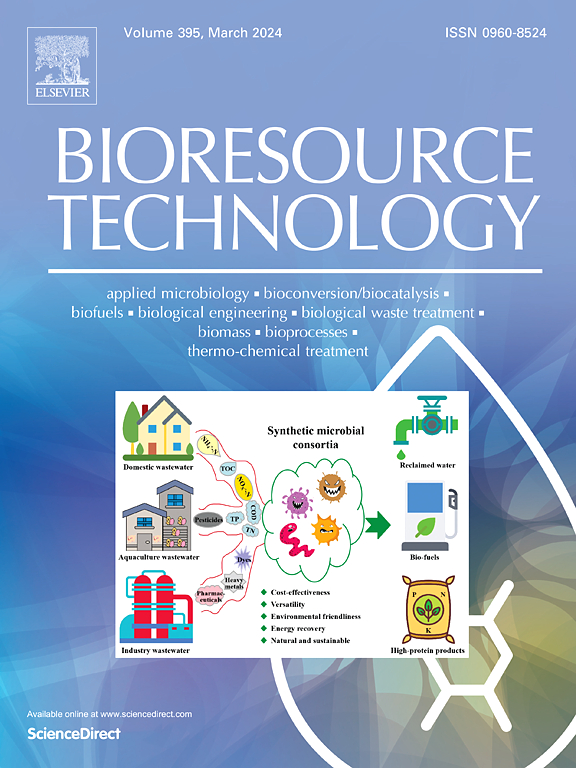三种新型二甲基二硫降解菌及其潜在降解途径的特征。
IF 9.7
1区 环境科学与生态学
Q1 AGRICULTURAL ENGINEERING
引用次数: 0
摘要
二甲基二硫(DMDS)是一种气味化合物,具有嗅觉阈值最低和毒性高的特点。探索对二甲基二硫具有高抗性和降解效率的细菌是必不可少的。研究人员从厨房垃圾中分离出了卢沃菲不动杆菌(Acinetobacter lwoffii)、门冬假单胞菌(Pseudomonas mendocina)和臭味菌(Myroides odoratus)。经过 6 天的单独处理,其去除率分别为 34.22%、40.95% 和 41.94%。由于目前数据库中对一些关键基因的注释不足,根据元基因组测定得出的 DMDS 代谢途径并不完整。经过 3 天的细菌群处理,A. lwoffii C2/ M. odoratus C7 的比例为 5:1,三种菌株的比例为 1:1:1,DMDS 的去除率达到了 100%。此外,联合菌株还能减少硫化氢(H2S)和二甲基硫醚(DMS)。这一发现拓宽了具有高耐受性和高效降解 DMDS 的细菌范围,对去除 DMDS 和臭气处理具有重要意义。本文章由计算机程序翻译,如有差异,请以英文原文为准。

Characterization of three novel dimethyl disulfide degrading bacteria and their potential degradation pathways
Dimethyl disulfide (DMDS) is an odor compound characterized by the lowest olfactory threshold and high toxicity. It is indispensable to explore the bacteria with high resistance and degradation efficiency to DMDS. Acinetobacter lwoffii, Pseudomonas mendocina, and Myroides odoratus were isolated from kitchen waste. After 6 days of individual treatment, the removal rates were 34.22 %, 40.95 %, and 41.94 % respectively. The DMDS metabolic pathways based on metagenomic assays were discovered to be incomplete due to the insufficient annotation of some key genes in the current database. Following 3 days of treatment with bacterial consortia at ratios of 5:1 for A. lwoffii C2/ M. odoratus C7 and 1:1:1 for the three strains achieved 100 % DMDS removal. Additionally, the consortia reduced hydrogen sulfide (H2S) and dimethyl sulfide (DMS). This discovery broadens the spectrum of bacteria exhibiting high tolerance and efficient degradation of DMDS, with significant implications for DMDS removal and odor treatment.
求助全文
通过发布文献求助,成功后即可免费获取论文全文。
去求助
来源期刊

Bioresource Technology
工程技术-能源与燃料
CiteScore
20.80
自引率
19.30%
发文量
2013
审稿时长
12 days
期刊介绍:
Bioresource Technology publishes original articles, review articles, case studies, and short communications covering the fundamentals, applications, and management of bioresource technology. The journal seeks to advance and disseminate knowledge across various areas related to biomass, biological waste treatment, bioenergy, biotransformations, bioresource systems analysis, and associated conversion or production technologies.
Topics include:
• Biofuels: liquid and gaseous biofuels production, modeling and economics
• Bioprocesses and bioproducts: biocatalysis and fermentations
• Biomass and feedstocks utilization: bioconversion of agro-industrial residues
• Environmental protection: biological waste treatment
• Thermochemical conversion of biomass: combustion, pyrolysis, gasification, catalysis.
 求助内容:
求助内容: 应助结果提醒方式:
应助结果提醒方式:


